Understanding Zinc Density in kg/m³: Key Considerations for Industrial Applications
Zinc’s density is defined as its mass per unit volume, which is an important factor in assessing its applicability for various purposes. At room temperature (about 25°C), pure metallic zinc has a density of 7140 kg/m³. This means that one cubic meter of zinc weighs 7140 kg. However, as with all essences, zinc’s viscosity varies depending on temperature, pollution, and the presence of alloying rudiments.
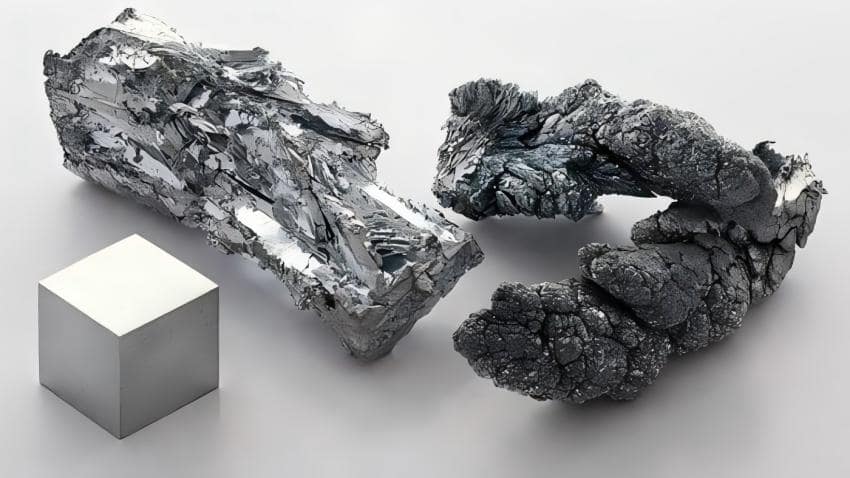
Molten Zinc vs. Zinc Dust Density: Critical Comparisons
Zinc’s density is significantly dependent on its form; solid, liquid or powdered zinc all serve specific roles within the industry, and each variation offers particular advantages:
- Molten Zinc Density: At temperatures above 419 deg C, zinc transitions from its solid state into liquid form and experiences an estimated decrease in density to around 6570 kg/m3 at 450 deg C as its metal atoms spread more widely apart than before. Understanding this change is integral when performing processes like hot-dip galvanizing; such reduction impacts the thickness and uniformity of protective coating applied over steel surfaces.
- Zinc Dust Density: Depending on particle size and compaction, powdered zinc dust has a reduced density because of air spaces between particles; its approximate bulk viscosity falls from 3500 kg/m¹ to 4500 kg/m¹. Mostly in the chemical processing or metallurgy sectors, optimizing storage and transportation efficiency depends on knowledge of zinc dust density.
Factors Influencing Zinc Metal Density
- Alloying Elements: The density of zinc may vary depending on the metal it is alloyed with—aluminium, copper, or magnesium. Highly employed in die casting, zinc-aluminum alloys have much lower densities, which influences mechanical properties and component weight.
- Lead or iron is one of the contaminants that might change zinc’s density and so influence its performance in particular use. Higher-purity zinc is preferred for precise processes like electroplating and electronics manufacturing.
Practical Applications of Zinc Density
- Hot-Dip Galvanizing: Galvanizing steel depends much on the lower density of molten zinc. It ensures that the molten zinc coats the steel surface uniformly, offering optimal corrosion protection.
- Zinc powders in additive manufacturing: Zinc dust, with its lower bulk density, is commonly used in powder metallurgy, where particle size and density are critical for creating vital, durable components in industries ranging from automotive to aerospace.
What Are the Different Types of Zinc Alloys?
Zinc alloys are integral to many industries due to their versatility, strength, and cost-efficiency. Each zinc alloy type’s composition and specific properties make it suitable for different applications. Here are the most commonly found types:
1. Zamak Alloys:
Zamak alloys are a family of zinc alloys containing aluminium, magnesium, and copper as the primary alloying elements. Common Zamak alloys include Zamak 3, Zamak 5, and Zamak 2, which balance strength, castability, and dimensional stability.
- Applications: Used extensively in die casting for automotive parts, household goods, and toys, Zamak is favoured for its high fluidity and excellent surface finish.
2. ZA Alloys (Zinc-Aluminum Alloys):
ZA alloys contain a higher aluminium content than Zamak alloys, which provides improved mechanical properties such as higher strength, hardness, and wear resistance. Common examples include ZA-8, ZA-27, and ZA-12.
- Applications: These alloys are used in more demanding mechanical applications such as gears, bearings, and structural components.
- Benefits: ZA alloys offer superior wear resistance, which is ideal for high-load applications. However, due to their lower fluidity, they may be harder to cast.
3. Zinc-Copper Alloys:
Zinc-copper alloys feature a higher copper content (up to 30%), enhancing their strength and corrosion resistance.
- Applications: They are used in electrical components, springs, and mechanical parts where durability and electrical conductivity are key requirements.
4. Zinc-Nickel Alloys:
Zinc-nickel alloys, containing significant amounts of nickel, provide excellent corrosion resistance even in the most challenging environments.
- Applications: Commonly used in automotive, aerospace, and marine industries, these alloys are critical in applications where long-term corrosion protection is essential.
5. Zinc-Tin Alloys:
Zinc-tin alloys combine zinc with tin, offering improved casting properties such as fluidity and dimensional accuracy.
- Applications: These alloys are popular in die-casting for components that require intricate details or high precision.
6. Other Custom Alloys:
Custom zinc alloys are often developed for specialized applications, and elements like lead, bismuth, or silver are added to improve specific properties such as machinability, corrosion resistance, or electrical conductivity.
What Are the Physical Properties of Zinc Alloys?
The following table highlights key physical properties of various zinc alloys:
| Alloy | Melting Point (°C) | Density (g/cm³) | Brinell Hardness | Tensile Strength (MPa) | Yield Strength (MPa) | Elongation (%) | Thermal Conductivity (W/m·K) | Electrical Conductivity (% IACS) | Thermal Expansion Coefficient (x10^(-6) /°C) | Typical Applications |
| Zamak 3 | 385-390 | 6.6 | 82-91 | 230-270 | 150-200 | 2月5日 | 113 | 27 | 27.4 | Automotive parts, electrical connectors, consumer goods |
| Zamak 5 | 380-386 | 6.6 | 85-96 | 290-320 | 230-260 | 2月5日 | 109 | 27 | 26.7 | Hardware, structural components, electrical components |
| Zamak 2 | 380-386 | 6.7 | 105-125 | 280-320 | 220-250 | 2月5日 | 105 | 27 | 27.4 | Brackets, handles, fittings |
| ZA-8 (Zamak 8) | 365-385 | 6.5 | 80-90 | 250-290 | 170-220 | 2月5日 | 116 | 29 | 27.4 | Industrial machinery components, automotive parts |
| ZA-27 | 480-495 | 6.4 | 130-160 | 310-365 | 200-230 | 2月5日 | 116 | 25 | 26.7 | Gears, brackets, marine components |
| ZA-12 | 375-390 | 6.7 | 80-100 | 235-275 | 150-180 | 2月5日 | 113 | 26 | 26.7 | Pump housings, valve bodies, electrical connectors |
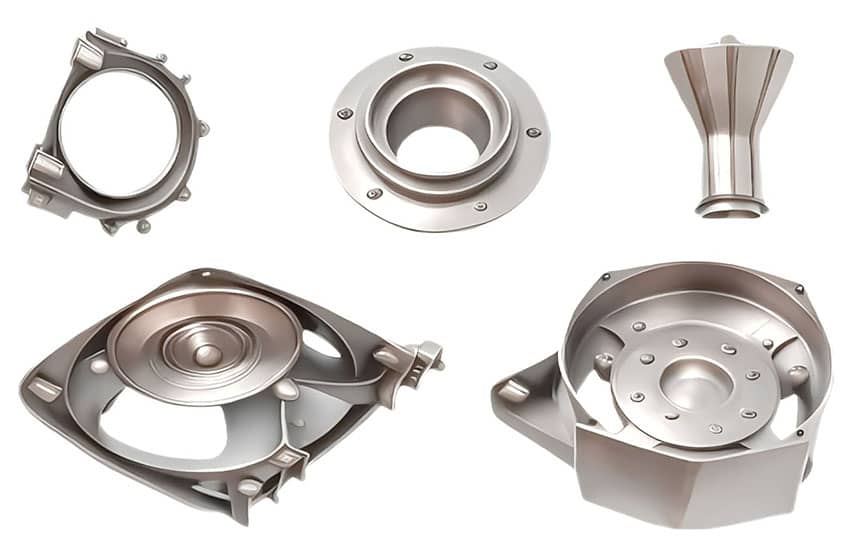
Factors Impacting Zinc Density
Like any other metal, the density of zinc is influenced by several key factors. Understanding these factors is crucial for industries that rely on zinc in different forms, such as die casting, galvanization, and alloy production. Let’s dive deeper into some of the primary factors affecting zinc density:
1. Temperature:
Zinc density has an inverse relationship with temperature, meaning that as temperature increases, zinc’s density decreases. This is due to thermal expansion, where the distance between zinc molecules increases as it heats up, reducing density.
For example, solid zinc at 25°C has a 7140 kg/m³ density, but when heated to 450°C (just above its melting point), the density drops to approximately 6570 kg/m³. This decrease is critical in applications like galvanizing, where the thickness of the zinc coating depends on its molten density.
DensityT=Density0×(1−α×ΔT)
Where α\alpha is the thermal expansion coefficient of zinc.
2. Alloy Composition:
The density of zinc changes significantly when alloyed with other metals. Zamak alloys, for instance, mix zinc with aluminum, magnesium, and copper. Aluminum is less dense than zinc, so adding it reduces the overall density of the alloy. For example:
- Pure Zinc: 7140 kg/m³
- Zamak 3: 6600 kg/m³
- ZA-27: 5000 kg/m³
Each alloy composition offers different mechanical properties, such as increased strength or corrosion resistance, making density a crucial factor in material selection for various applications.
3. Impurities:
Impurities present in zinc can have a substantial effect on its density. High-purity zinc has a relatively high density, but lower-purity zinc, often from recycled sources, can contain elements like lead or iron. These impurities alter the density:
- Lead increases density but can affect the material’s structural properties.
- Iron might increase density but also make zinc more brittle.
Understanding the purity level of zinc is critical in applications where strength and performance are essential, such as in construction materials or die casting.
4. Physical Form:
Zinc’s density also varies with its physical state—solid, molten, or powdered. For example, zinc powder has a bulk density much lower than solid zinc due to air gaps between particles. The proper density of solid zinc is 7140 kg/m³, while the bulk density of zinc powder ranges from 3500 to 4500 kg/m³, depending on particle size and compaction.
This distinction is crucial in processes like powder metallurgy, where the packing density affects the strength of the final product, or in coating applications, where powder from zinc is applied for uniform coverage.
Zinc Alloy Density on Precision and Performance in Die Casting
The performance of the cast components and the efficiency of the production process depends critically on the interaction between the density of zinc alloys and zinc die-casting. Important points of contact comprise. Key points of connection include:
1. Material Weight and Structural Integrity
- Density has a direct impact on the weight of zinc die-cast parts. With densities ranging from 6.4 to 6.7 g/cm2, zinc alloys strike weight and structural strength with balance. This larger density helps components be more durable and load-bearing, particularly for uses that need strong mechanical qualities.
2. Mold Fillability and Precision
- The fluidity of melted zinc alloys, affected by their density, guarantees fast and exact filling of complex moulds. The material’s capacity to flow into complex forms lowers the danger of porosity. The high-precision components it generates make zinc alloys perfect for intricate die-cast parts.
3. Thermal Conductivity and Cooling Efficiency
- Zinc alloys have good thermal conduction, and their density helps to accelerate the cooling and solidification processes during die casting. This increases production efficiency since parts can be cast quickly and cooled without compromising their structural integrity.
4. Dimensional Stability and Accuracy
- Zinc alloys are dense, which contributes to the dimensional stability of their parts during cooling. This reduces warping risks and ensures that parts maintain their design tolerances, which is crucial for applications that require tight precision and consistently high quality.
5. Application in High-Load Components
- Due to their higher density, zinc alloys are well-suited for high-strength applications in die casting, such as automotive parts, gears, and heavy-duty housings. The density provides enhanced wear resistance and mechanical stability in demanding environments.
In conclusion, the density of zinc alloys plays a fundamental role in enhancing material properties, manufacturing precision, and application performance in zinc die-casting processes.


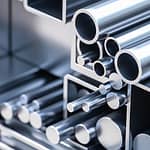
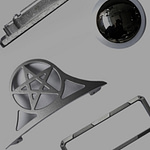
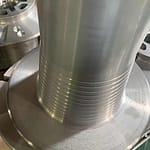

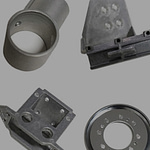


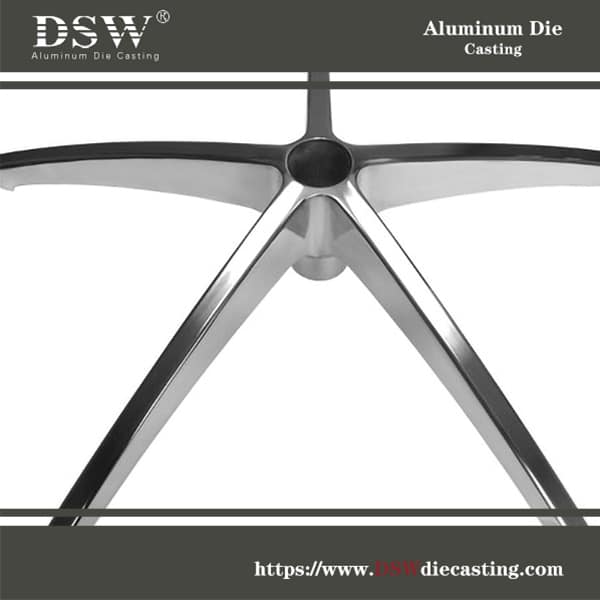

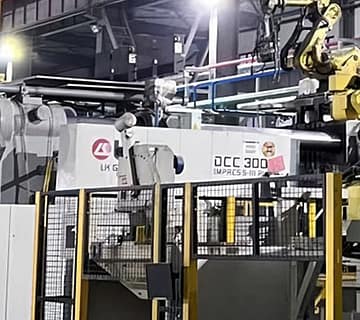
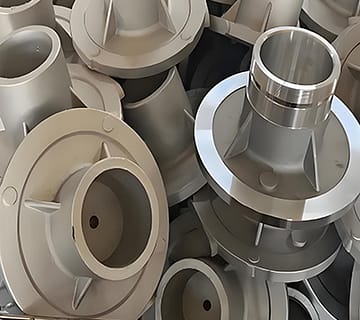
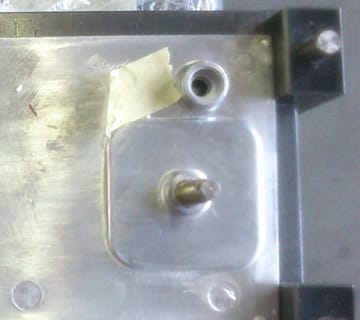
No comment